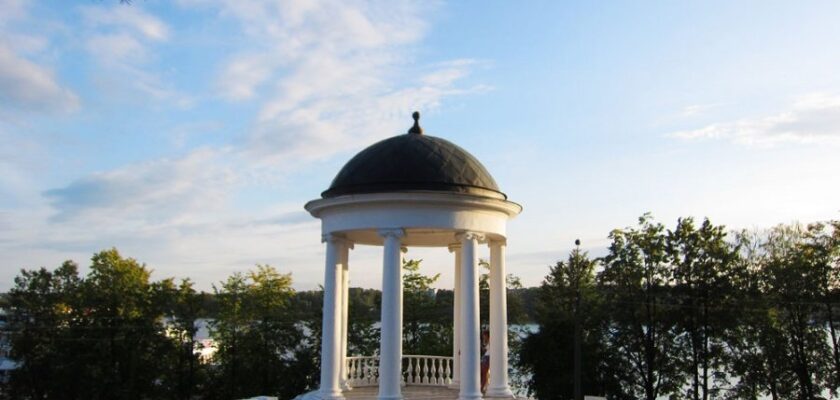Ostrovsky’s Gazebo
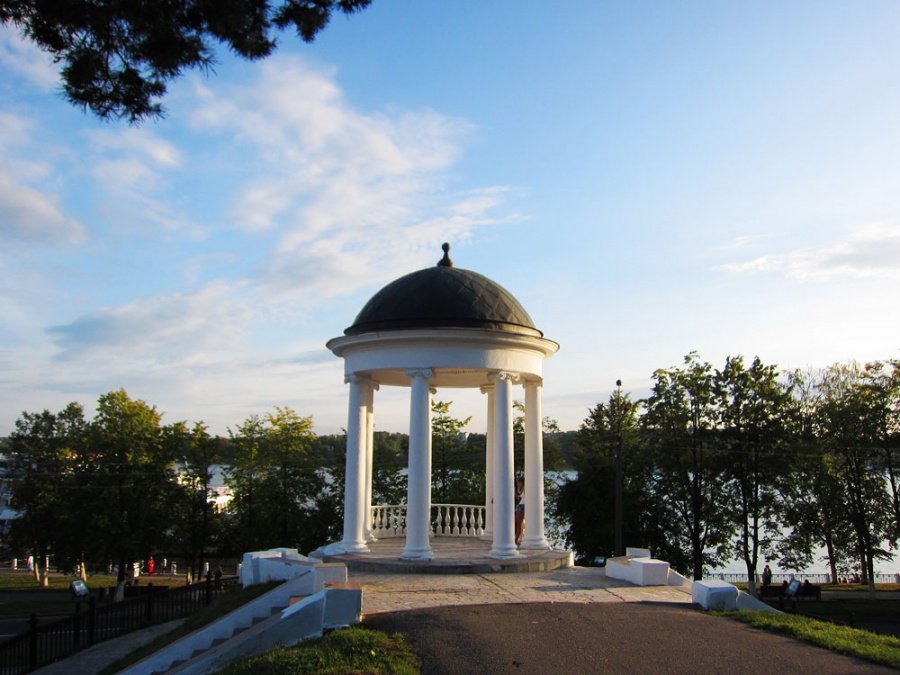
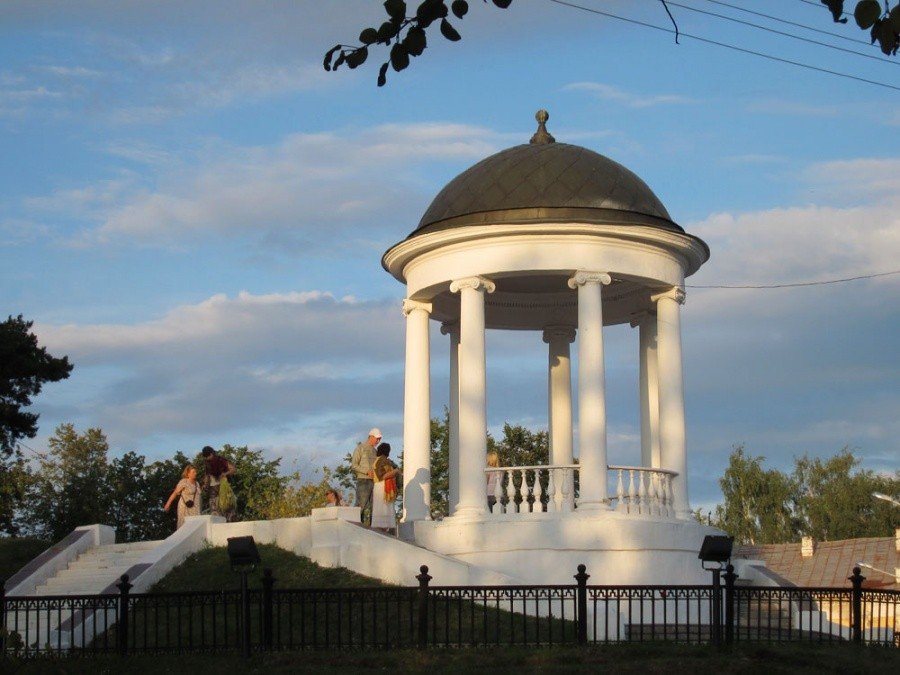
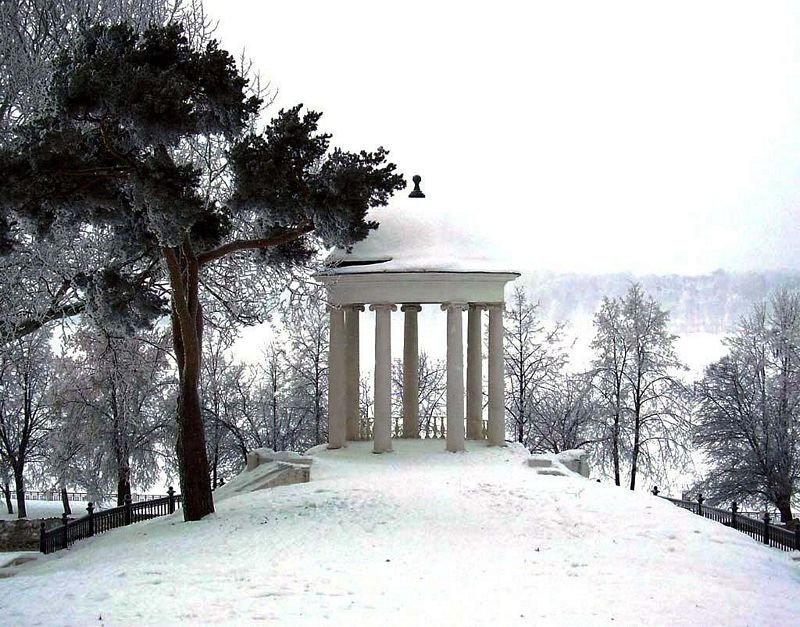
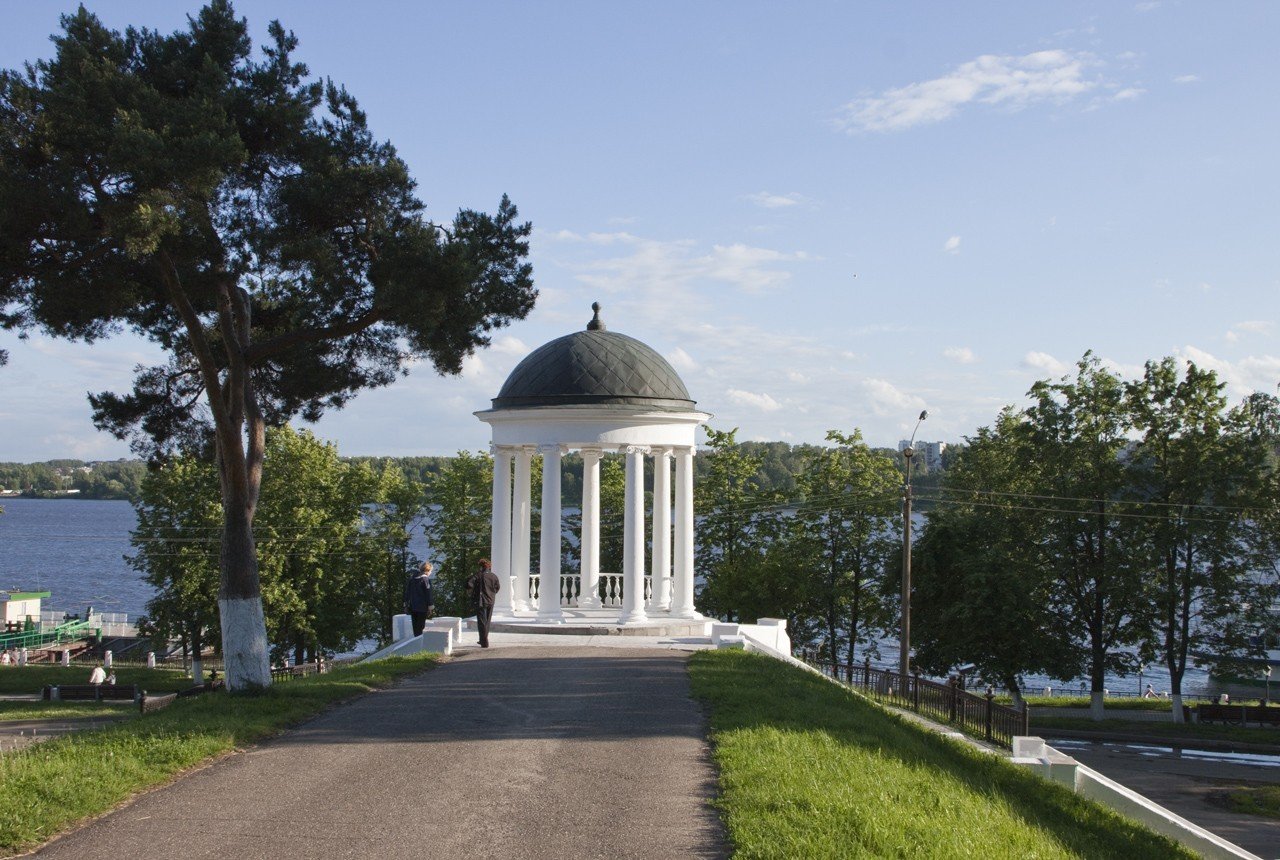
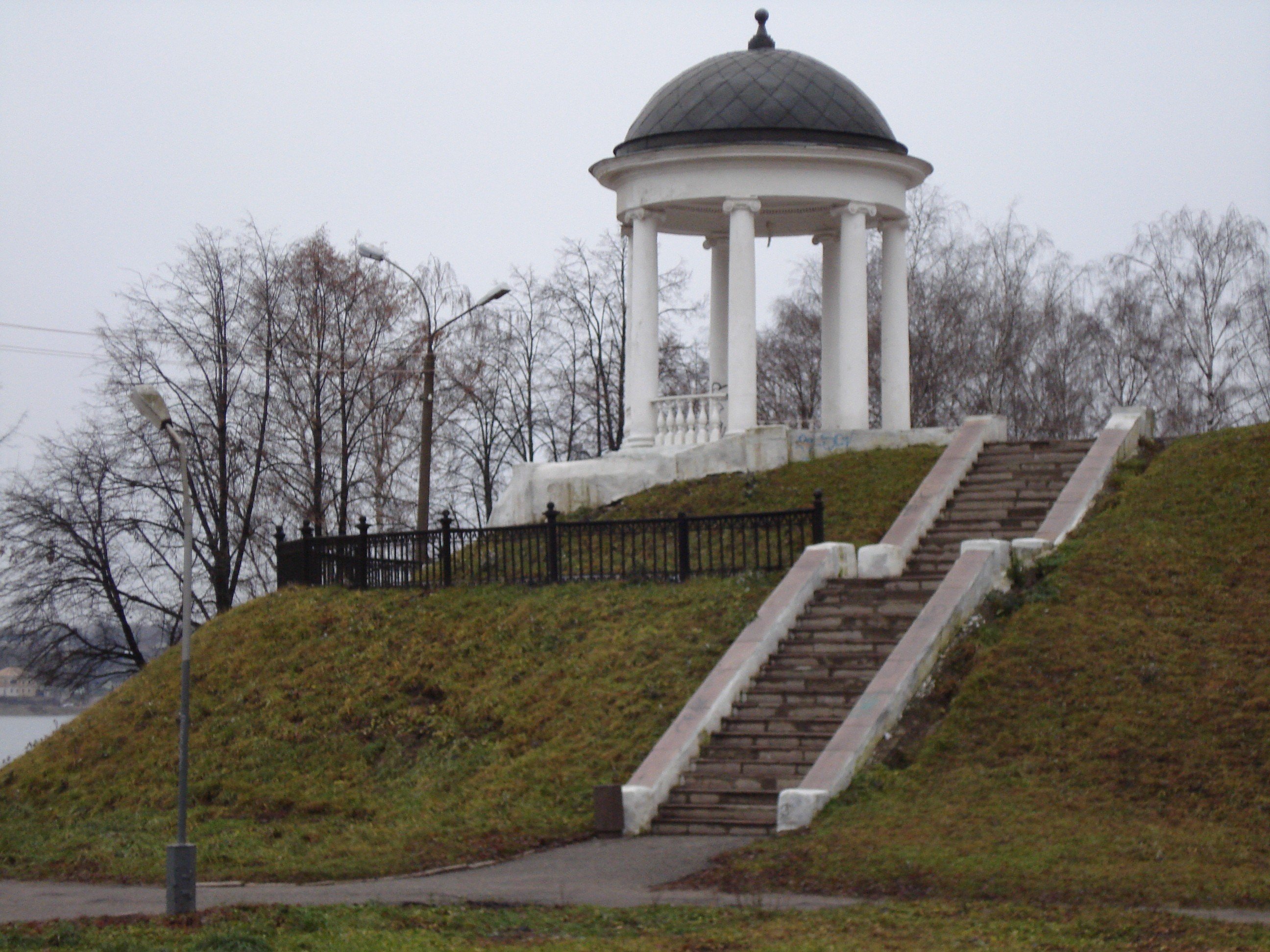
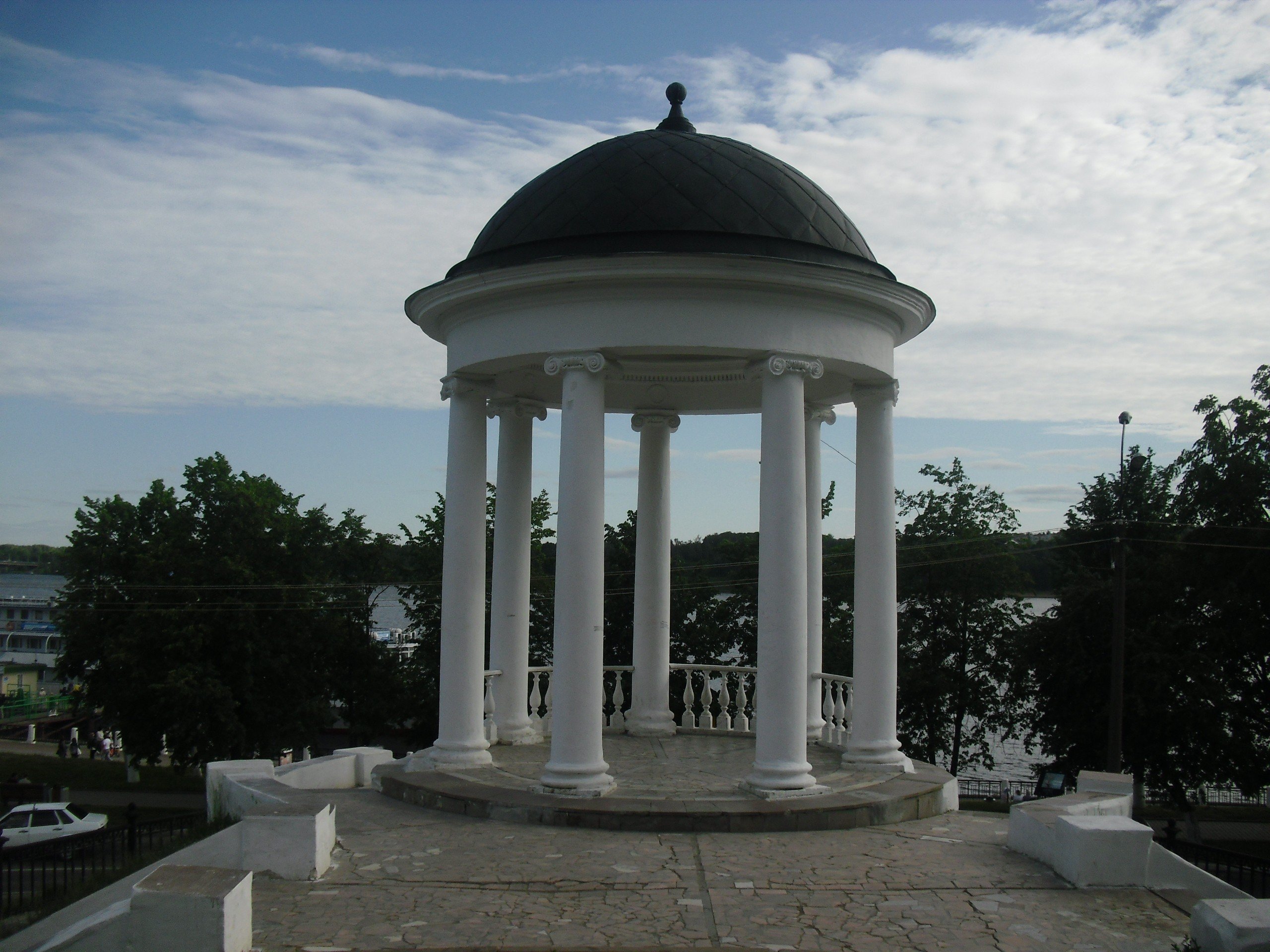
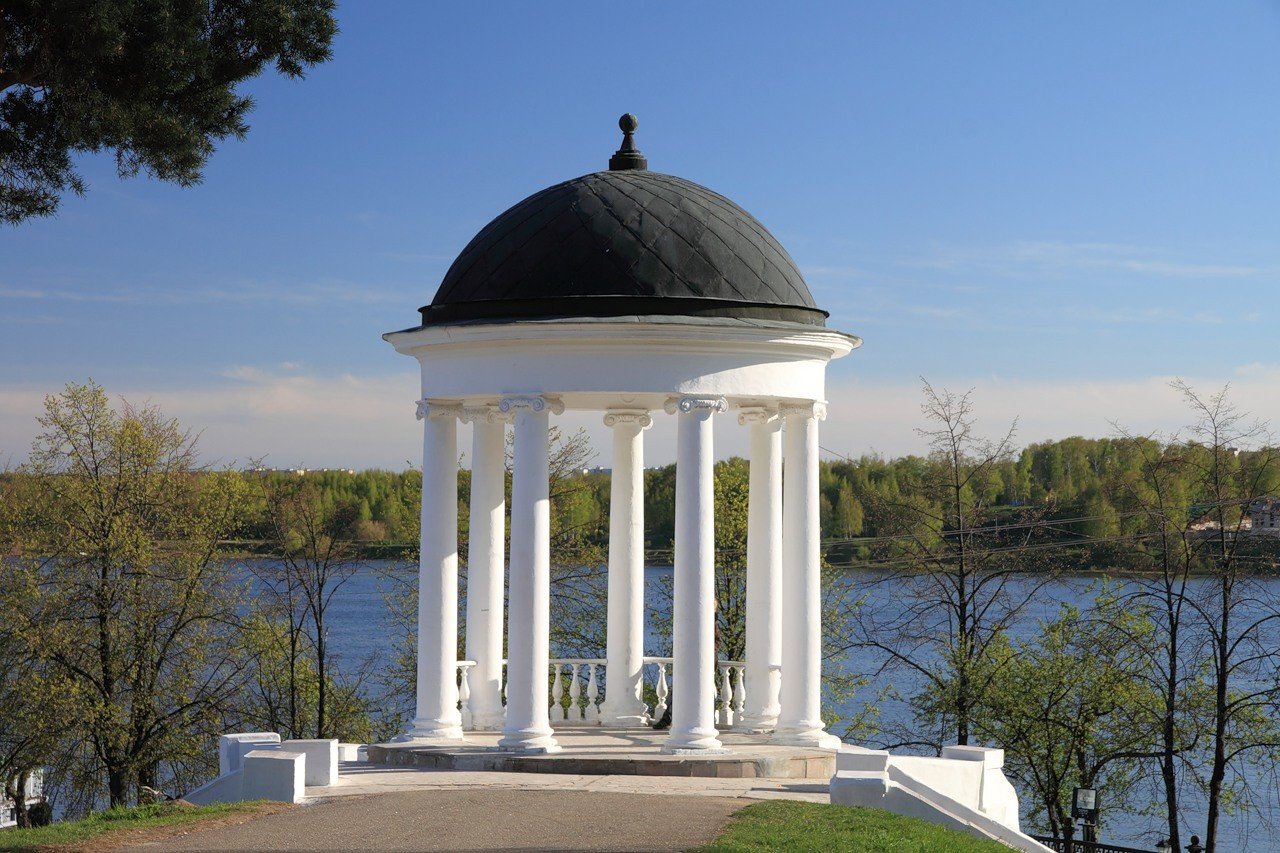
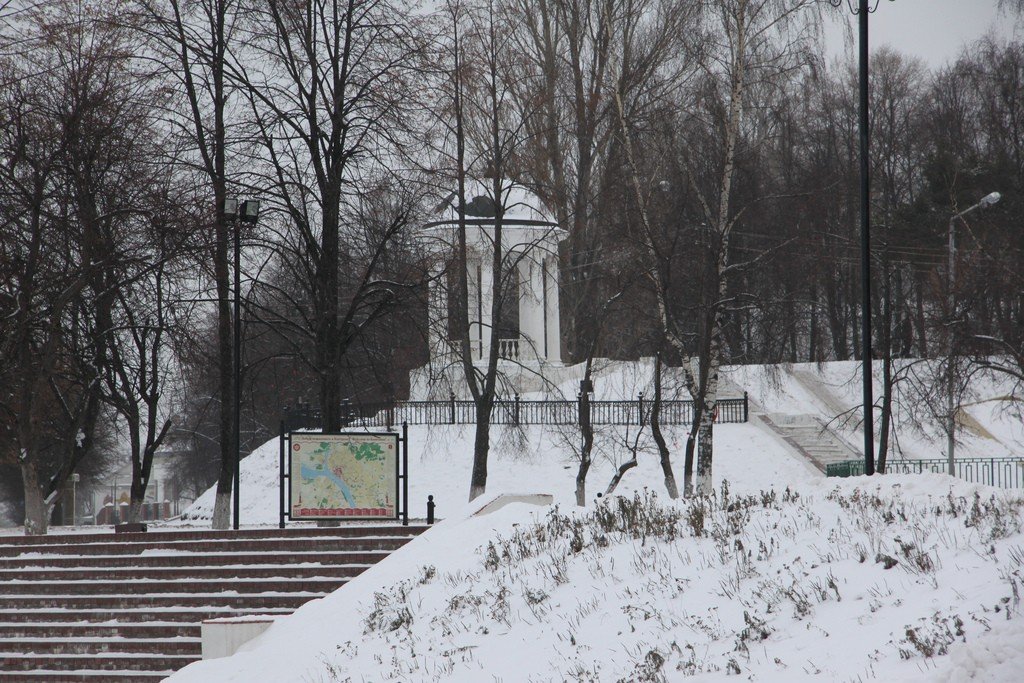
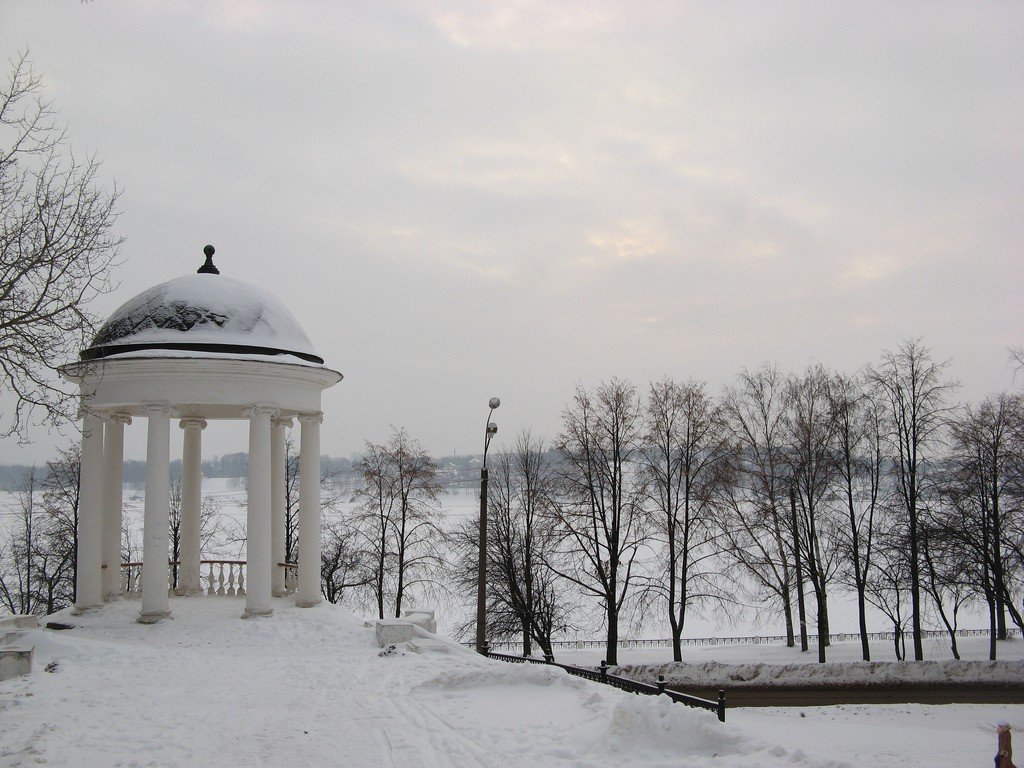
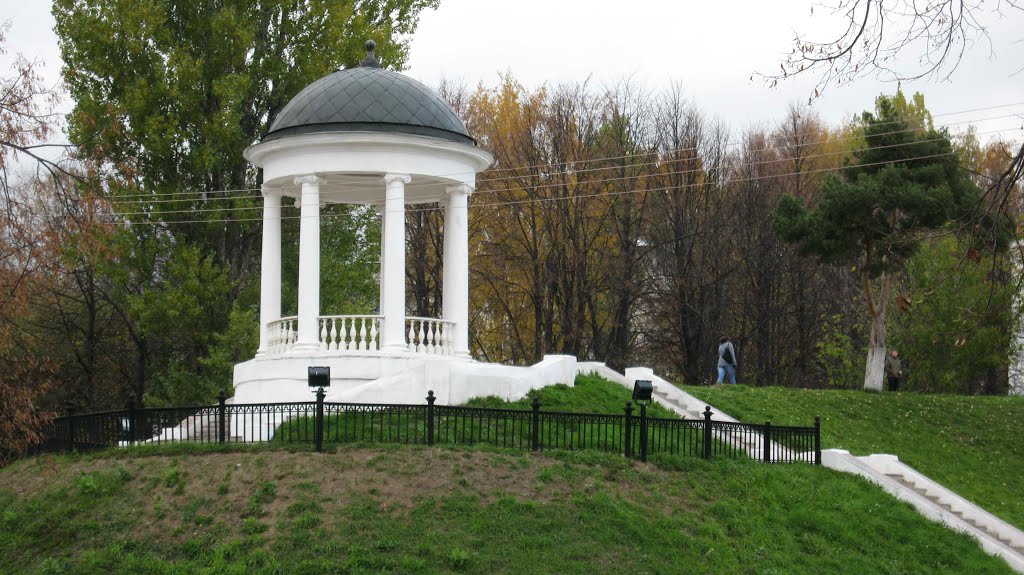
Ostrovsky’s Gazebo is a graceful snow-white rotunda on the left bank of the Volga River and one of the most beautiful sights of ancient Kostroma. Residents of the city often come here themselves and bring friends, relatives and tourists who came to Kostroma to the picturesque gazebo. The reasons for the popularity of this place is that it is associated with the name of the famous Russian playwright, and the rotunda offers a wonderful view of the Volga.
.Ostrovsky’s gazebo appeared on the left bank of the river in the middle of the last century. It was built high above the Volga, located on an artificial embankment, which was formerly used as the ramparts of the ancient Kostroma Kremlin. The rotunda is built in the classical style and looks like light park pavilions of old noble estates of the XIX century. It has seven slender columns of the Ionic order and an expressive helmet-shaped roof.
.At the base of the columns, on the river side, a snow-white balustrade is installed. The gazebo rises on a green slope, which has an openwork metal fence. From the side of the park to the rotunda is a wide asphalted path, and near the building on the slope laid two two-step stairs, which can be used to descend to May 1 Street.
.
The gazebo is named after Alexander Nikolayevich Ostrovsky in gratitude for the trace that the writer left on the Kostroma land and his great love for the Volga. In 1984, scenes for the feature film “Cruel Romance” were shot here, which was based on Ostrovsky’s famous play “Bespridannitsa.”
Kostroma in Ostrovsky’s life
The life path and creative biography of Alexander N. Ostrovsky is closely connected with Kostroma and its surroundings. The city itself and its inhabitants became prototypes for most of the towns on the Volga, which the playwright described in his plays.
Ostrovsky was very fond of Kostroma. It is known that when the young playwright visited the family estate Shchelykovo, he stayed at Lopukhin’s inn, which was located on Susaninskaya Square, in the very center of the city. Of course, in those days there were no asphalted streets and an arranged embankment. But the writer liked the old building of Kostroma, and from here he could admire the river valley and the opposite bank of the Volga for a long time. The view of the river, opening from the high left bank in Kostroma, Ostrovsky considered one of the best on the entire Volga.
The grateful people of Kostroma immortalized the memory of the great Russian writer by naming not only the gazebo after him, but also the city’s drama theater, one of the oldest in Russia. The main heroine of Ostrovsky’s fairy tale in Kostroma is dedicated to two museums – “Terem Snegurochka” (38 Lagernaya Street) and “Fairy Tale Land of Snegurochka” (9 Molochnaya Gora Street).
.How to get there
Ostrovsky’s gazebo stands on May 1 Street, near the southern end of the green Central Park, not far from Kostroma’s river station. Next to the gazebo, on Lesnaya Street, route cab No. 4 stops.
